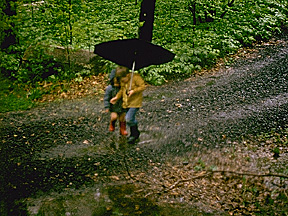
In a time when Freud's suspicion of human motives has become the background against which all actions are seen, when we recognize, as Auden has it, that 'the desires of the heart are as crooked as corkscrews', any approach to knowledge which smacks of introspection or engaged observation is suspect as well. Yet Langer argues convincingly [in Chapter 2 of Mind, Johns Hopkins Press] that only through exploring the engagement of observer and psychological subject will we ever come to confront those phenomena which are central to an appreciation of learning in the language capable mind.
Focus: Understanding Learning with Case Studies
This collection of studies focuses on understanding natural learning though application of the case method. The four studies all focus on the number-related learning of my son, Robby, during his sixth and seventh years. The other thread that binds them together is the issue of rendering more accessible and dependable those kinds of insights that can only come about through the articulate testimony of the psychological subject. The collections of ideas and observations move, in their attempt to deal with the issue of learning, from introspection to a balanced mixture of mechanically recorded experiment and naturalistic observation.
The inspiration for beginning this recording was the observation by a fellow researcher [L.Miller, who studied with Cellerier in Geneva] that a major technique being explored by Genevan psychologists involved the following steps:
Introspection and Case Study Methodology
Generally, people's understandings of various problems depend on their own experience more than on general principles, but experience is characteristically particular as to content and episodic in structure. Introspection is vulnerable to criticism as a review of atypical experiences where the details and significance of experiences are modified to conform to the individual's preconceptions. Capturing a record of one's own behavior for later analysis might permit the judicious mixture of reproducible records of experience with a richer appreciation of the possible meanings of the recorded behavior. Such an attempt at constrained, analytic introspection begins this collection in Emerging Forms in Turtle Geometry.
Beyond Introspection
Obviously enough, introspection alone is inadequate for studies of instruction. The extension of constrained, analytic reflection to situations where ideas are transferred from one mind to another is explored in Three Encounters with Number. As an engaged experimenter, I brought to this study the possibility of understanding the behavior from the inside; further, as the father of the subject, I have a long familiarity with him which helps significantly in interpreting what he meant by what he said and did.
Given that our focus is on natural learning, in the sense of the collection of processes which create common-sense knowledge, it proved essential to move beyond the limits of experimenter-directed activities to explore how the initiative of the child and the social context reveal the character of natural learning in its interactions with people and problems. Sketches of Natural Learning is a selection of observations drawn from a more extensive but sparse collection of experimental protocols on various themes taken up with my son during his seventh year. Finally, Extending a Powerful Idea explores how theory construction derives from pre-existing heuristics for exploring and creating interesting new problems .
Relationship to Another Study
As a study of one child's learning in a computer rich milieu, this collection is a companion piece to Computer Experience and Cognitive Development, the more intensive study and analysis of my daughter's learning in her sixth year.

Publication notes:

"Un p'tit coin d'Paradise
Dans un coin d'parapluie"
G. Brassens